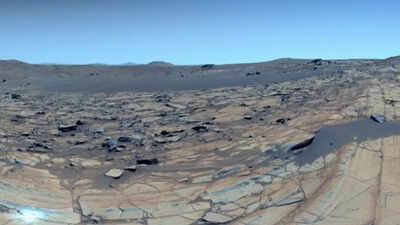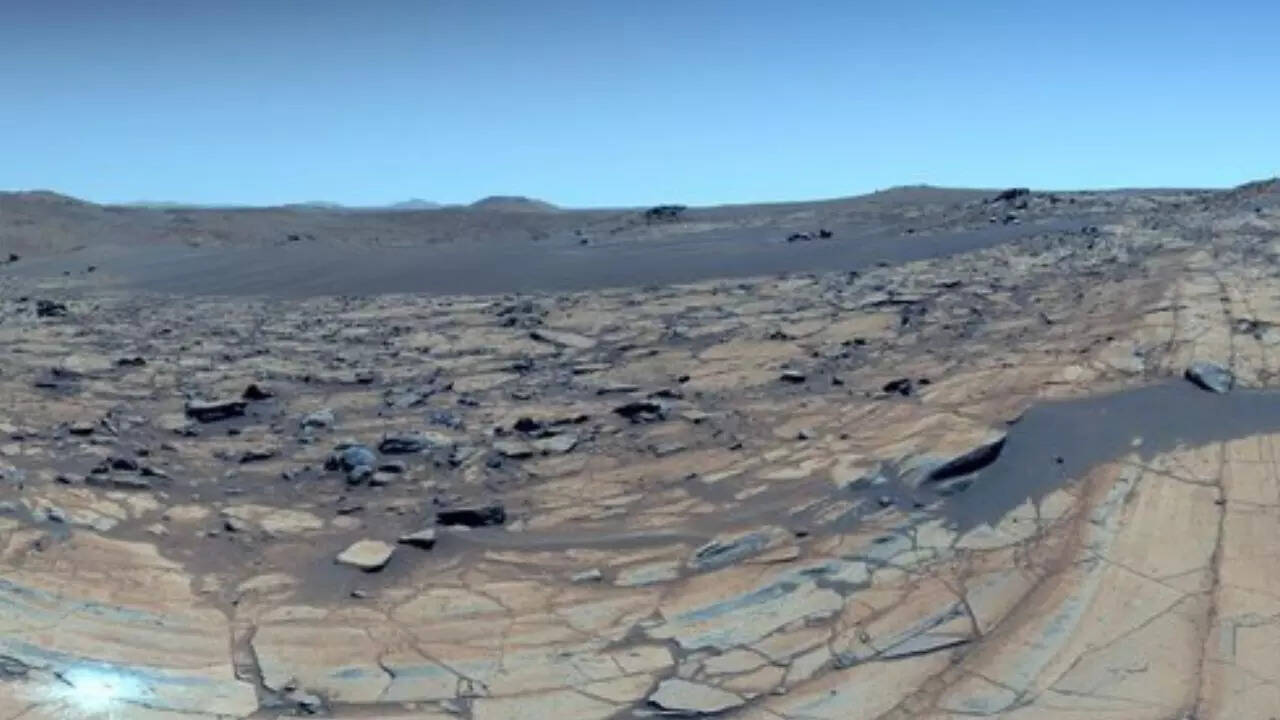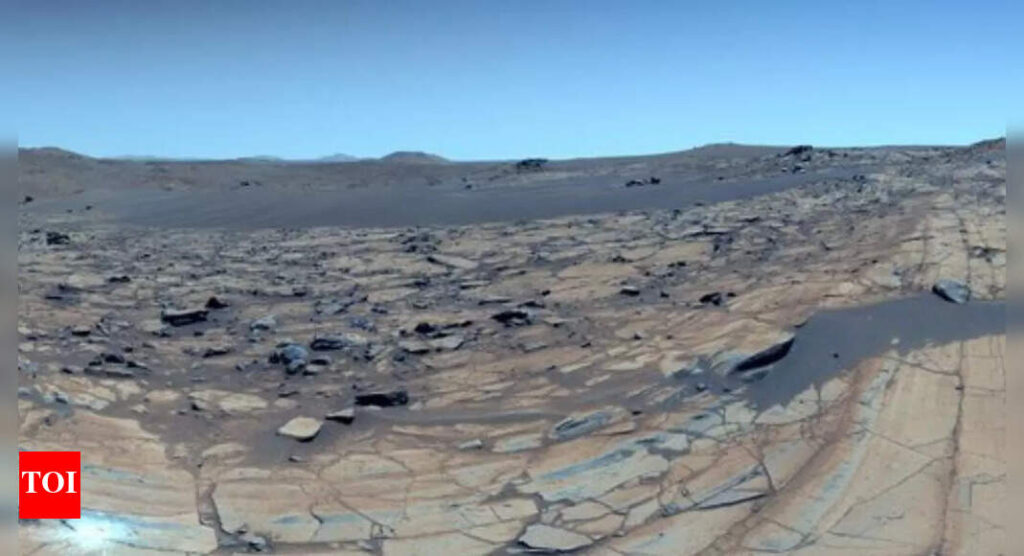
NASA’s Perseverance rover has captured its most detailed and vivid panorama of the Martian landscape to date. Taken on May 26, 2025, at a location known as “Falbreen,” the image is a 360-degree mosaic stitched from 96 high-resolution photos. Enhanced in color, the stunning panorama features unusually clear skies and an optical illusion of blue, adding a surreal twist to the red planet’s traditionally dusty appearance. This milestone in visual clarity showcases the power of Perseverance’s imaging tools and offers scientists a sharper look at the ancient geology surrounding Jezero Crater.
NASA’s Mars team strikes gold at Falbreen
Falbreen, the location of the panorama, is situated near the top of Jezero Crater’s rim, one of Mars’ most geologically rich areas. The imaging team took advantage of a rare stretch of dust-free weather to capture details from rock textures to distant hills over 40 miles away. The site includes sand ripples, boundary lines between ancient terrains, and a mysterious “float rock” that may have been transported by natural forces long ago.While the Martian sky is typically reddish due to fine dust particles, this panorama’s enhanced-color version shows it in a deceptive blue hue. In reality, the clear skies were ideal for imaging, and color enhancement was used to accentuate contrast and geological differences, making features stand out more vividly for scientific analysis.

Precision from Perseverance
The Mastcam-Z instrument, mounted on the rover’s mast, captured the images on Sol 1516 (Martian day), providing researchers with unparalleled clarity. At the center-left of the mosaic is an abrasion patch, Perseverance’s 43rd rock abrasion, used to expose the interior of a rock for further analysis. The rover’s robotic tools allow scientists to investigate the mineral makeup before drilling and collecting core samples.Falbreen’s terrain may be among the oldest Perseverance has explored. With its distinct contact zone between olivine-rich and clay-bearing rocks, the area could hold crucial clues about Mars’ geological past and potentially its habitability. By combining visual, chemical, and contextual data, researchers aim to deepen our understanding of Mars’ formation and evolution.NASA’s Mars program continues to push boundaries, with Perseverance laying the groundwork for future human exploration. As acting NASA Administrator Sean Duffy said, “Vistas like that of Falbreen are just a glimpse of what we’ll soon witness with our own eyes.” The mission, part of NASA’s broader Artemis to Mars roadmap, underscores humanity’s bold steps toward putting boots on the Martian surface in the decades ahead.










